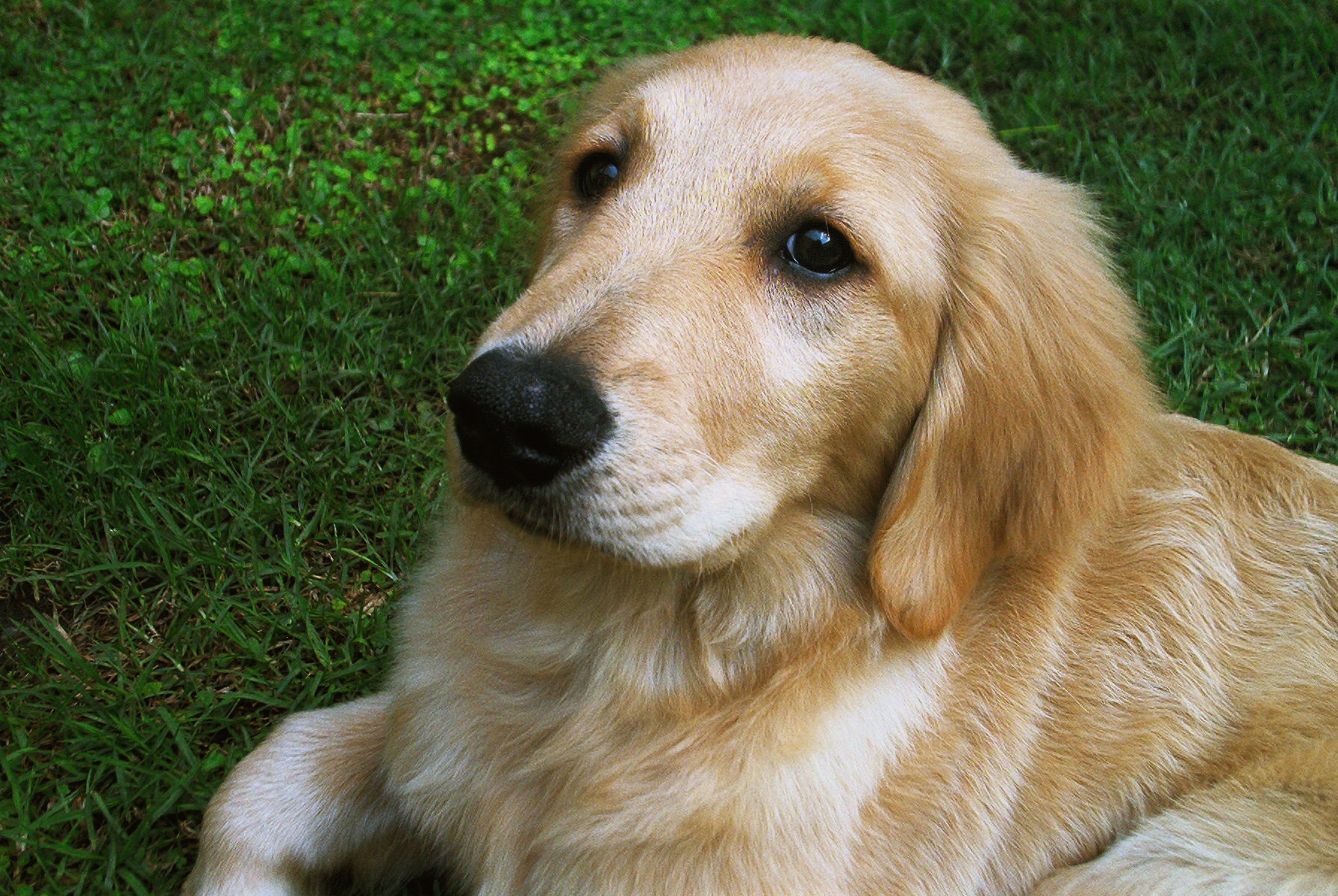Dog Stress – Reading Your Dog’s Body Language
Although dogs can’t communicate with us in our conventional manner, they do let us know, quite often, what they’re feeling and thinking about doing in a given situation. Dog stress can be expressed through the use of body postures and facial expressions. These gestures can be very subtle, from a simple flick of the tongue, to the overly obvious, such as barking and/or biting.
Since these signals can be so subtle and reactive behaviors can happen so quickly, it is very important that dog owners are able to recognize the signals their dog is sending their way. This will allow the informed and prepared dog owner to be proactive in defusing stressful situations that can potentially lead to fearful or aggressive behavior.
Dog Stress/Submissive Posture

The dog above is showing signs of stress and submission. She has been exposed to something that has caused her to go beyond her comfort zone, and she is subsequently showing signs that she is having a difficult time coping with it.
The point to remember about dog stress is that it is totally subjective. What’s overly stressful for one dog may be neutral or even somewhat enjoyable for another. Therefore, it’s important to understand and pay attention to your dog’s individual stress threshold levels and know when she’s had too much.
No learning occurs when the body is stressed because of chemical influences on the brain. The animal is concentrating on survival first and foremost. Stress removal is the only thing on her mind. These behaviors are totally out of the animal’s control.
What to Do If Your Dog Show Signs of Stress
If your dog is showing signs of stress during your training sessions, the best thing you can do is take a break. Stop and give the dog time to rest. When you go back to training, start with something easier you know the dog will get correct, and then work your way up again.
“If your dog is stressing because of another person, animal or particular situation, very calmly, remove the dog from that situation.”
Don’t rush to pick the dog up or coddle her. That will only reinforce the stressful situation. Just calmly try to get the dog’s attention on you (using food, a toy, your voice, etc.) and get her to a more relaxed environment.
Always proceed into different situations and different levels of distractions cautiously and at the dog’s level. She’ll definitely let you know if she’s ok with what you’re exposing her to.
Some additional indicators of dog stress (look for clusters of these (3 or more):
- Drooling
- Hackles Up
- Freezing Up/Not Moving
- Fainting
- Scratching on floor/ground with paws
- Trembling
- Tense Body
- Excessive Shedding/Dandruff
- Wanting to Escape Situation
- Excessive Yawning
- Excessive Lip Licking
Neutral/Relaxed Position

Dogs will usually assume the body position above, or something similar, when they are at ease. Each dog’s posture and facial expressions in this state will differ from dog to dog; however, the overall demeanor and body state will be very relaxed and comfortable.
Take note of your dog’s body and facial positions in this state and compare them to her body and facial positions when she experiences different levels of stress. Notice how the ears, eyes, body and tail differ between the relaxed, comfortable state and the stressful states.
Offensive Threat/Aggression Position

This dog has been stimulated by something in her environment and she is getting prepared to go on the offensive. She is trying to make herself look larger and more powerful through her body postures. Notice the ears, tail and hair along her back. She is completely focused on the issue at hand and will not take her eye off of it. She feels confident that she would have the upper hand, should a confrontation occur, and because of that, she’s ready to stay and fight rather than run away.
She may show her teeth, growl and/or bark. If the problem get too close within her comfort zone or gives her a good enough reason, she may attack. She is ready to defend her territory and force whatever it is, person or animal, out of that comfort zone. If, on the other hand, the dog had been excited by something she considered enjoyable, the hair on her back and neck (hackles) would be down and the tail would most likely be relaxed, lower and loosely wag. Her whole face and body would seem at easy and unthreatening.
Defensive Threat/Aggression Position

This dog is exhibiting a fear response to some stimulus. Her first choice would be to escape the object rather than to stay and fight it; however, if she is pushed too far or pushed into an area where she can’t escape from, she will protect herself.
If a dog is barking and showing this type of defensive position, do not physically correct her barking. It could make her even more fearful and possibly cause a bite reaction to protect herself. Try to get her, very calmly, far away from the fear inducing object or situation so she can relax and focus on you.
Once she’s relaxed to the point of being able to take food, try to get to perform some very simple attention-based exercises where she’s able to focus on you. This will allow her to become even more relaxed and confident again.
“Each dog responds to stressful situations in different manners.”
Depending on the genetic makeup of the dog, amount of early socialization, proper training, etc., some dogs are able handle difficult situations extremely well, while others become extremely reactive.
By observing your dog and noticing how he or she expresses herself in varying levels of stressful environments, you’ll be better equipped to handle the situation and ensure that the fear or threat positions described above don’t occur.













